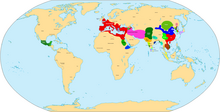| Millennium: | 1st millennium |
|---|---|
| Centuries: | |
| Decades: | |
| Years: |
| 250 by topic |
|---|
| Leaders |
| Categories |
| Gregorian calendar | 250 CCL |
| Ab urbe condita | 1003 |
| Assyrian calendar | 5000 |
| Balinese saka calendar | 171–172 |
| Bengali calendar | −343 |
| Berber calendar | 1200 |
| Buddhist calendar | 794 |
| Burmese calendar | −388 |
| Byzantine calendar | 5758–5759 |
| Chinese calendar | 己巳年 (Earth Snake) 2947 or 2740 — to — 庚午年 (Metal Horse) 2948 or 2741 |
| Coptic calendar | −34 – −33 |
| Discordian calendar | 1416 |
| Ethiopian calendar | 242–243 |
| Hebrew calendar | 4010–4011 |
| Hindu calendars | |
| - Vikram Samvat | 306–307 |
| - Shaka Samvat | 171–172 |
| - Kali Yuga | 3350–3351 |
| Holocene calendar | 10250 |
| Iranian calendar | 372 BP – 371 BP |
| Islamic calendar | 383 BH – 382 BH |
| Javanese calendar | 128–129 |
| Julian calendar | 250 CCL |
| Korean calendar | 2583 |
| Minguo calendar | 1662 before ROC 民前1662年 |
| Nanakshahi calendar | −1218 |
| Seleucid era | 561/562 AG |
| Thai solar calendar | 792–793 |
| Tibetan calendar | 阴土蛇年 (female Earth-Snake) 376 or −5 or −777 — to — 阳金马年 (male Iron-Horse) 377 or −4 or −776 |

Year 250 (CCL) was a common year starting on Tuesday (link will display the full calendar) of the Julian calendar. At the time, it was known as the Year of the Consulship of Traianus and Gratus (or, less frequently, year 1003 Ab urbe condita). The denomination 250 for this year has been used since the early medieval period, when the Anno Domini calendar era became the prevalent method in Europe for naming years.